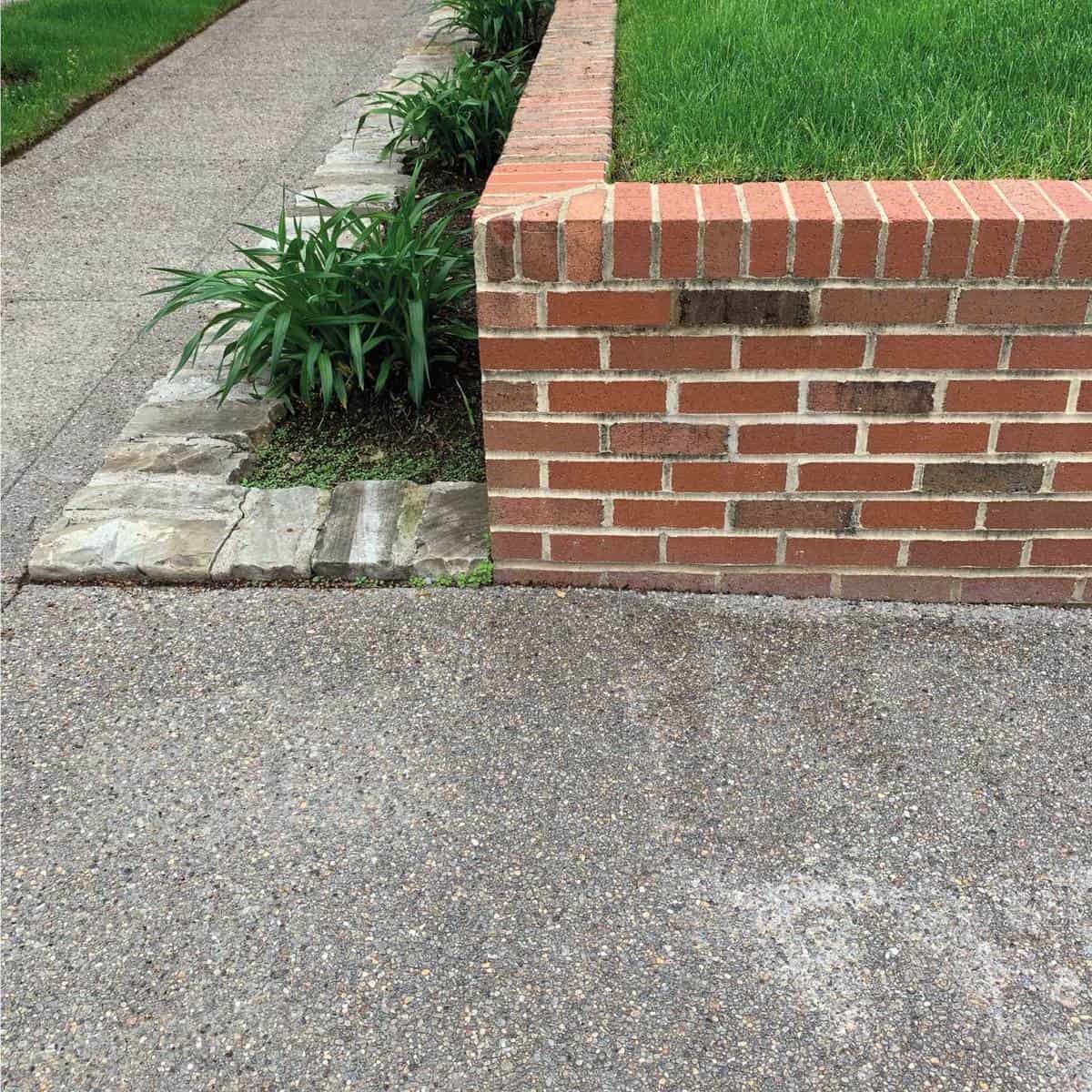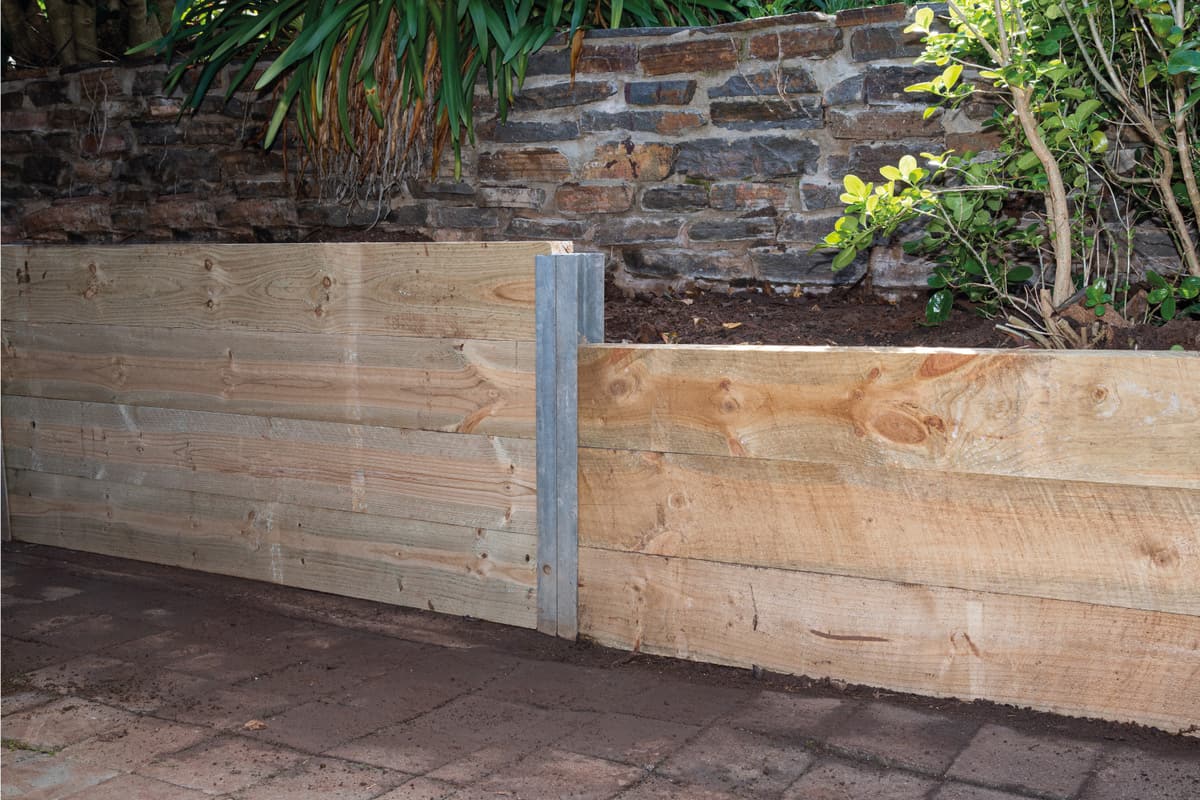Retaining walls are a great way to level out a sloping yard or maintain two different levels of soil. Whatever your purpose is for building a retaining wall, you might be wondering how deep the retaining wall posts should be. Well, we've done the research and have an answer for you.
Retaining wall posts should be at least as deep as the amount of soil they will be holding. A good rule of thumb is to halve the height of the wall and then add 4 inches. This is how deep you should place your posts.
Now you have a general idea of how deep to place your posts, but keep reading as we elaborate on this further. We'll discuss some other ways people calculate the depth of their retaining wall posts. Additionally, we'll answer some other questions you might have about retaining walls, including what is the strongest type.

Depth Of Retaining Wall Posts
If you're getting ready to dig your holes for your retaining wall posts, you likely have a good idea of how tall your retaining wall is going to be. One method is to dig your holes at least half the height of your wall.
Another method used by someone who frequently constructs retaining walls is to dig at least 3ft down. 3ft is a good depth to hold the soil sturdily behind most retaining walls.
Then there's the method we mentioned above that is used by a landscaping company located in Australia. Though they use mm instead of inches, the concept is still the same. Half the height of your wall and add four inches. For example, if your wall is going to be 30 inches tall, you should place your posts at least 19 inches deep. The additional 4 inches account for any topsoil you might add.
How far apart should retaining wall posts be?
Now you know how deep they should go, but what about how far apart the posts should be?
A good distance between retaining wall posts is 3ft. You can increase or decrease this amount by a couple of feet if you'd prefer that for aesthetic reasons. However, you should keep the distance below 7ft to avoid the horizontal planks from buckling. If you begin spacing out your posts 3ft apart but find you have some distance left to cover, it may be worth extending the wall to cover the last 3ft. Or, you can divide the length of the wall by the number of posts you want to space them evenly.
Retaining Wall Trench
To build a retaining wall, you will need to excavate a trench for the base of the retaining wall to be built in. The wall footing and base of the wall will need to be buried in the ground, just like the posts. Just like the posts, there are important recommendations for the depth you should place these as well. To account for both the footing and base of the wall, trenches should be dug deep enough to allow three inches of gravel footing and then half of the first row of blocks or wood plank.
Retaining Wall Footing Depth
The wall's footing is what goes underneath the wall to keep it level and secure. Some choose to compact gravel for their footing, while others use concrete pours. Gravel is a good option if your wall is less than 15ft long. The footing depth depends on the height of your wall. In most cases, a good rule to follow is that the depth of the footing should be an eighth of the height of the wall.
However, the footing of the wall should also be below the frost line. In northern states, the frost line may be further down than an eighth of the height of the wall, so be sure to go by its depth instead of the walls.
Retaining Wall Base Depth
The base of the wall will also need to be below ground level. If you use blocks to build your retaining wall, make sure the first row is buried halfway up the blocks. Typically this is between 4 to 6 inches deep.
What is the strongest type of retaining wall?
There are a few types of retaining walls. Retaining walls made of concrete retainer blocks are typically the strongest and easiest to install for homeowners. Concrete block retainer walls will work for most retainer wall needs. In general, steel pile retaining walls are the strongest and are often installed temporarily at construction sites to help support foundations. Other retainer wall materials include wood, bricks, and pavers. We've included some image examples below.
Concrete Block Retaining Wall

Here is an example of a block retaining wall. These are the most durable type of retainer walls for homeowners. They are also one of the easiest to install, especially for DIYers. However, they can only be used for retaining walls no taller than 4ft.
Paver/Stone Retaining Wall

Paver or stone retaining walls can be more decorative and are also pretty sturdy. However, they often require more architectural expertise to build, making it worthwhile to contact a professional.
Brick Retaining Wall

Another sturdy option, bricks, will work well for constructing a retaining wall. Installing a brick retaining wall is not as easy as using interlocking concrete retainer wall blocks, though, and will be more time-consuming. However, some homeowners prefer the look.
Wood Retaining Wall

Wood retaining walls are the least sturdy of the bunch. They cannot withstand a heavy load, so they should not be used for any heavy-duty retaining. However, they are a great option if you're looking to create raised flower beds.
Steel Pile Retaining Wall

Strong and durable, but you can see why you might not want to used steel in your backyard. It's the least attractive of the materials and definitely more suitable in a construction zone or commercial setting.
Do I need drainage behind a wood retaining wall?

Wood is more porous than other retaining wall materials such as brick or cement, but it's still a good idea to add drainage of some kind to your wood retaining wall. Even though it's less likely to buckle from too much water, wood is more susceptible to rot and decay, which can cause the retaining wall to fail.
To ensure longevity and decrease the chance of the retaining wall failing, all walls should have a drainage method. Fortunately, there are a few ways to add drainage to your wall.
Retaining Wall Drainage Methods
Adding drainage stone, a drainage pipe, filter fabric, or weep holes are some ways you can add drainage to your retaining wall.
Drainage Stone

Drainage stone should be added behind your wall. It should extend at least a foot back and up to within six inches of the top of the wall. It is a type of gravel that you can find at most hardware stores.
Drainage Pipe

Another option is to install a perforated pipe along the bottom of your wall. The pipe will need an outlet, though, so keep this in mind.
Filter Fabric
Filter fabric can be placed directly behind the retaining wall to help with drainage. It can also be placed on top of your layer of drainage stone under your topsoil.
Click here to see Filter Fabric on Amazon.
Weep Holes
Weep holes are just holes drilled into the wall to allow water out. If the water can not be released, pressure will build and can cause the wall to fail. Weep holes are more important in masonry-built retaining walls rather than wood, however.
If you're concerned about erosion affecting your retaining wall, check out our other blog post on the topic here: How To Stop Erosion Around A Retaining Wall.
How long do you wait to backfill a retaining wall?
Concrete takes time to cure, so you should not backfill a retaining wall right away. Depending on the type of concrete used and the humidity of the area it is curing in, it can take up to three weeks to a month to reach full strength. However, most retaining walls under 4 feet can be backfilled after 7 days.
Final Thoughts
We've given you several methods for deciding how deep to bury your retaining wall posts, so hopefully, you now feel more confident about your project. If in doubt, though, bury them at least 3 feet as this should be sufficient for any retaining wall you want to build yourself. Happy Building!
For more reading on the topic of retaining walls, check out some of our other articles below:

